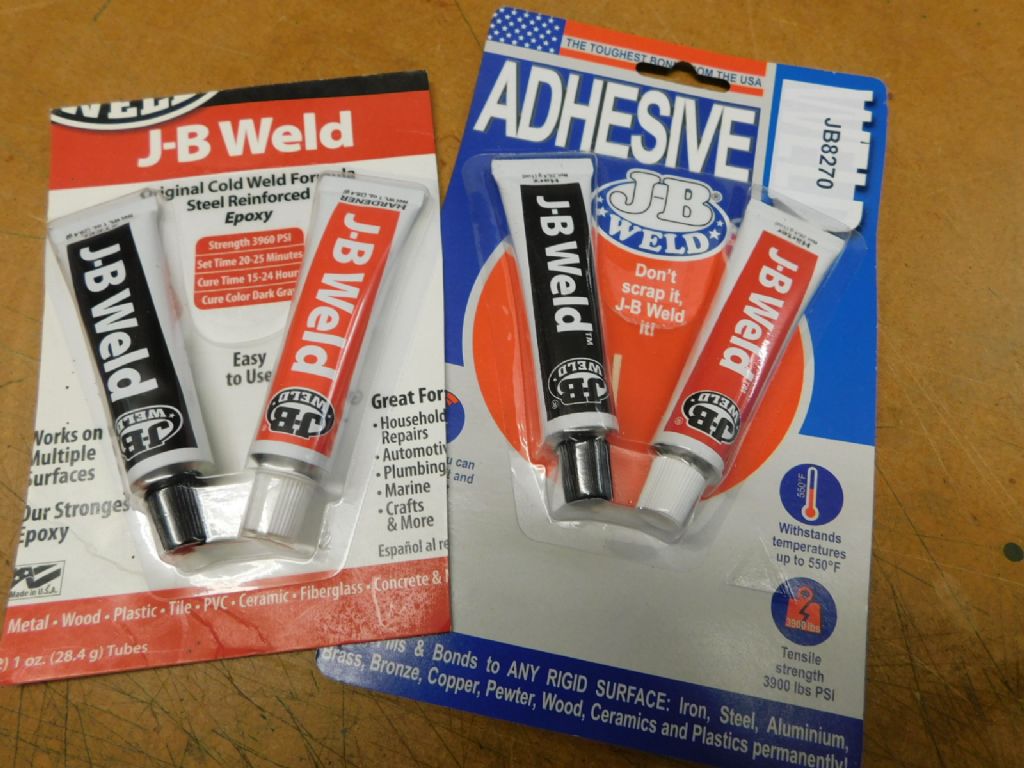Hi Guys, Thought this might be of interest to some

I have long been an advocate of using JB Weld as an aid in model engineering. It is an epoxy based product that is readily available at reasonable cost. It's advertised virtues are that it has a high tensile strength listed as 5020 psi and more importantly will retain that strength under fairly high temperatures – up to 550F. There may be other products that are better – i.e. stronger but whether they have the same temperature resistance is not known. I believe it's combination of the two – at it's cost – makes it a very viable addition to any model engineers workshop.
I first began to use it on silencers for glow motors in control line flying. Dubious of it's claims at first I soon became aware of it's capabilities such that all fasteners were done away with. A glow motor can get very hot indeed at the point of exhaust but the JBW withstood this without failure and so began a journey where it's use became more and more frequent. On the last engine made it was used extensively for pipework fittings.
When I described this potential use on this particular build, it's purpose, quite understandably was questioned from a safety point of view and it made me realise that whilst I had every confidence in it's use as intended I had nothing to base that confidence on save it's previous use.
I was making the condenser at the time and the flanges for the pipework were to be simply JB'd into place. The question arose in my mind that despite the low pressures that would be involved in this item (no steam so no vacuum) I didn't actually know save faith!
I made a test piece up for the three flanges – identical to those for the model in shape size and location

The flanges were JB'd in place in the same manner as would be used

Once cured the fillets were filed to shape as per the final item

This was left for a few days to fully cure and then pressure tested. It was taken to the limit of the gauge 300psi and held for 20 plus mins or so. There was no trace of water on the blue paper.
This was then repeated but this time with the test piece submerged in constantly boiling water at the same pressure and time. No loss of pressure and no detriment to the JBW.

The part after the boiling water test. No evidence of the JB deteriorating

I then made a simple fitting up. 8 mm pipe and elbow

These were JB'd together and again left to cure

This too was pressure tested to the same pressure/time/boiling water without failure.

I'm no academic – I realise these tests aren't scientific but they served to satisfy to me any doubt that the product is fit for purpose for the application I intended it for.
I have described it's latest use on the Marine Condensing thread but thought it may be of an interest to a wider audience than that possibly attracts
Hope that's the case -Tug
Edited By Ramon Wilson on 16/03/2021 11:49:59
Edited By Ramon Wilson on 16/03/2021 11:55:31
Ron Laden.














